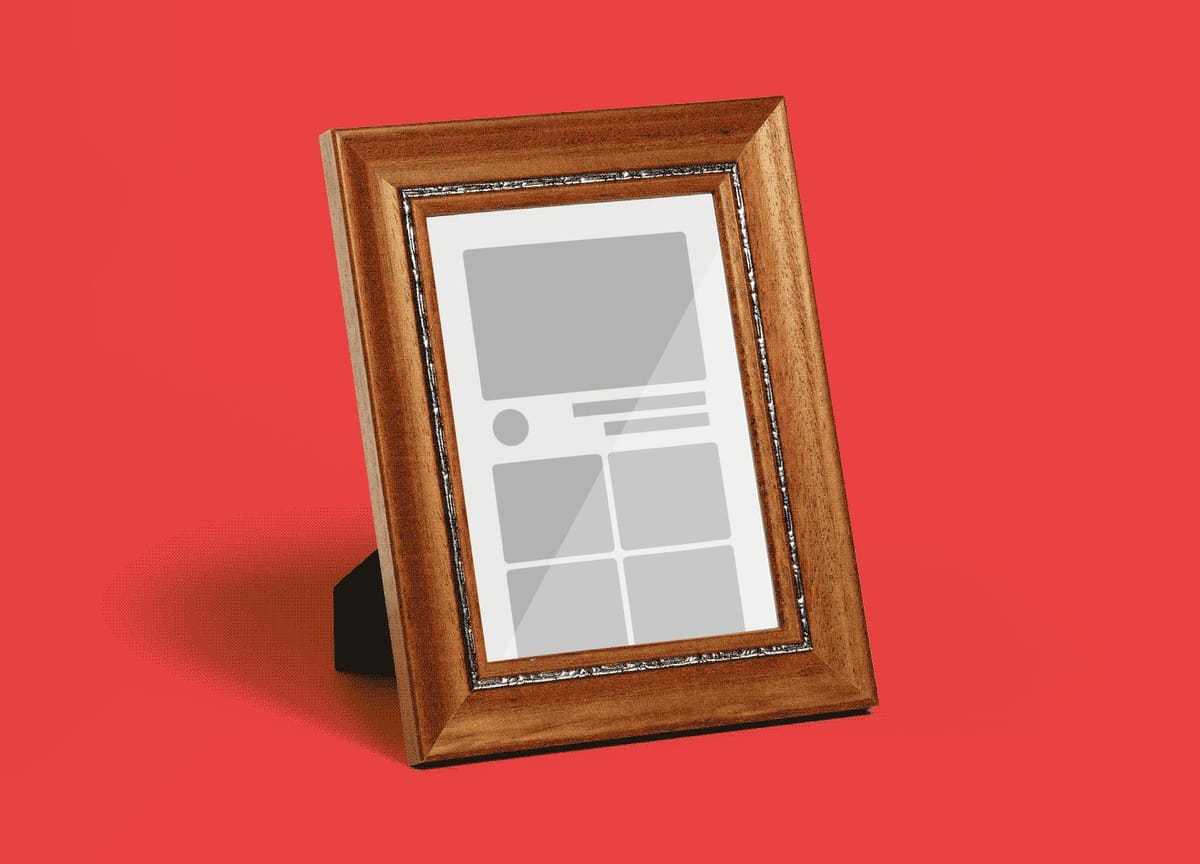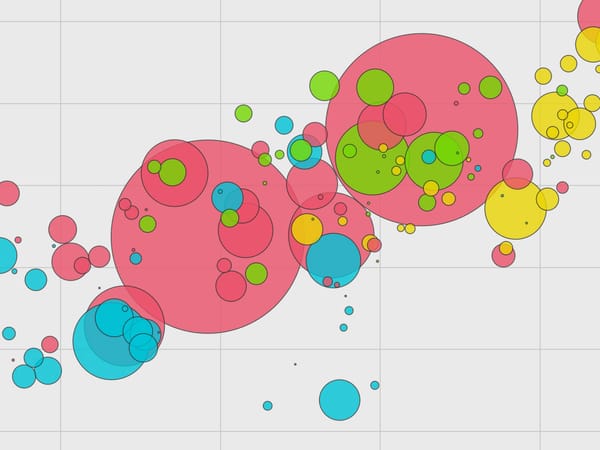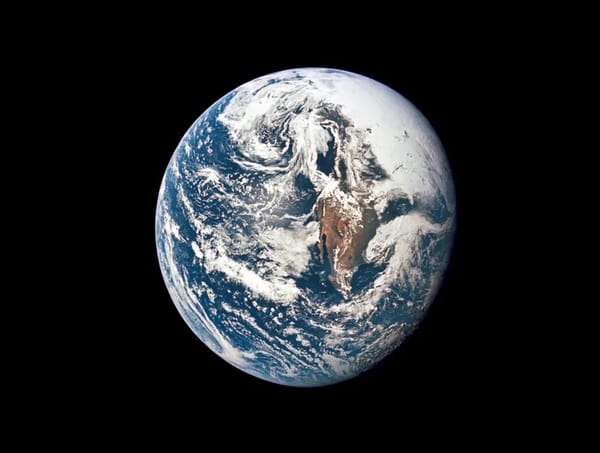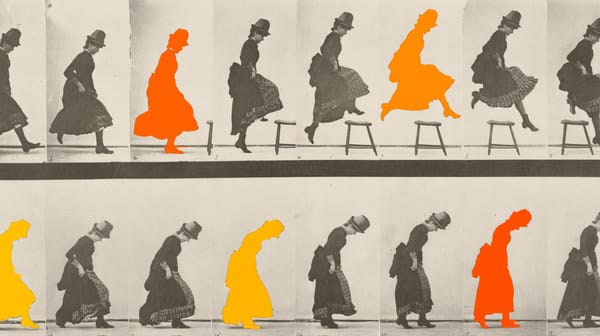Back to the Future
There is an emotional landscape hidden in our most-used apps. Here’s how to explore it.

Hi everyone,
The new season of the Frontier Magazine Podcast launches in September and will feature ten exciting conversations with writers, artists and arts professionals, startup founders, and others using creativity to accelerate positive change. Last Friday’s update for supporters announced five of the guests who will be joining us. That post is now unlocked for everyone to read; click through to find out who we’re speaking with and for updates on other recent stories. On with the show!
The apps we use most, and which hold the most data we’ve created ourselves, default to showing us the current moment. Email is sorted chronologically, with the newest message at the top. Our calendars open to today or this week, with an indicator of the current time. Photos apps show us our latest pictures. These defaults are the software designers’ best attempts at being useful. They assume you want to accomplish something related to the here and now.
The dramatic increases in both storage and computing power over the past two decades have changed how most of us think about what’s saved in these apps. In the 1990s and early 2000s, I was mindful of the number and size of the files on my computer and regularly bumped against my hard drive’s capacity, forcing me to prune what I deemed less important. Today, increased storage and computing power, plus the near-seamless and near-free offloading of files onto the cloud (i.e., other computers), mean such concerns are largely irrelevant.
First Gmail, in 2004, and then other services encouraged us to archive by default, rather than delete. The scarcity mindset has become one of abundance; we now sail through our digital worlds leaving a wide wake. I’m opinionated and tight-assed about what I keep, and still I have an archive of fourteen thousand emails stretching back to 2003, nearly eight thousand photos stretching back to 2002, and every event in my calendar stretching back to early 2016.
This mass of digital detritus is a fine-grained record of my life; were I noteworthy, biographers would have no trouble reconstructing my days. In recent months I’ve begun to think of these archives not as a dusty repository but as a landscape to be explored. Taken whole, the data is hard to make sense of, but each individual piece has an emotional resonance. And it’s far easier for me to sift through this material than it is, say, for my parents to go through the boxes in their garage.
It started with a widget on my phone: Apple’s Photos app offers one called “For You” that features a rotating selection of pictures. Earlier this year I added it to my home screen, and every few hours it pulls up something different from my past: my kids when they were younger; exploring the city with my wife; a work trip; fun hangs with friends. I thrilled to being reminded of experiences that had otherwise slipped into the dark recesses of my memory—even the occasional tough ones, like during the early months of the pandemic. These pictures were little portals into the person I once was, reminding me of the relationships I fostered, the places I visited, and the dreams I had for myself.
So I began looking for other ways to wander through this hidden landscape. I’ve set up a few tools that prompt the kind of time dilation and emotional recall offered by my photos widget. In Apple Music, I created smart playlists organized by the albums’ release year, giving me a handy portal back to the music I listened to upon its release. A quick glance at, say, the 2012 playlist reminds me how much I loved encountering new releases by Beach House, Dirty Projectors, Andy Stott, and Tanlines. (A few years ago I began using Last.fm for something similar.) In Obsidian, the app I use for all my writing, I installed a plugin that gives me quick access to my “daily notes” from a month ago, three months ago, six months ago, and so on. These files are a mix of journal entries, work notes, and links to things related to people and places that are important to me; revisiting them helps me see how some things change and others don’t. It also reminds me that what seems impossible to survive in a given moment eventually passes—like that phase two summers ago when my youngest woke up at 4:00 or 4:30 every morning.
You don’t need a special widget or plugin to have these experiences; your software’s powerful search functions—and, at least in Apple’s case, the on-device sorting and categorization powered by machine learning—can also be put to creative use. If I type “mountain” into Duckduckgo, the site first returns a Wikipedia entry and a definition from the Encyclopedia Britannica; its image results include a bunch of generic, highly saturated color photographs of the world’s highest and most jagged peaks. The site will likely give you different—but equally boring—results. Among much else, searching that word in my photos app returns the time I got stuck in fog high above Trømsø, Norway, and a hike I took with my wife through Griffith Park in Los Angeles. Likewise, searching for “flower” brings up my cousin’s wedding, a formal garden I once visited in Germany, a little still-life arrangement I made at my office desk one spring day fifteen years ago, anniversaries, funerals, and even a snapshot of my mother’s handwritten copy of my grandmother’s chocolate-chip cookie recipe (on floral stationery).
Using search as a kind of Proustian madeleine works in all these basic apps. Because these tools hunt through the specifics of my days, even the most generic search terms yield evocative results. I entered July 26, 2013—ten years ago today—in my email app and immediately it pulled up a message to an old friend I haven’t spoken to in a few years, prompting me to check in on him; the same date five years later reminds me of how gratifying it felt to be recruited for a new job.
We think of these apps as being purely utilitarian, and most of the time I still use them as intended. My inbox is still sorted latest-first. But by entrusting them with so much information about ourselves, they can also be windows onto the people we once were, the relationships we once had, and the world as it then felt to us. What will you find when you go exploring?
Love all ways,
Brian
PS—For more on creatively misusing our most basic digital tools, see this issue from late May extolling Google Docs as a publishing platform.
🔗 Good links
- 📂 “If you want to get through the project and not make yourself crazy and despondent over it, start simply“: Library of Congress archivists on starting your own personal archiving project
- 🗓️ Julian Lehr on creating “multi-layered calendars”
- ☁️ Eve Upton-Clark, in Atmos, on the increasing carbon footprint of digital hoarding
- 📸 New app: Retro, “a friends-only photo journal where you share for yourself as much as your friends.” (And why its founders started it.)
- 👩🏻💻 The world’s last internet cafes, from Uganda to Nepal and Mexico City to Hong Kong
- 🏗️ The shortlist for RIBA’s first Reinvention Award, celebrating the adaptive reuse of buildings, includes a project by 6a Architects, one of my favorite firms





